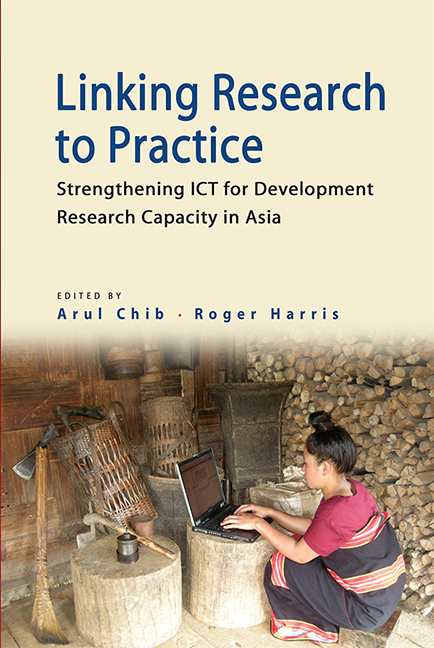Book contents
- Frontmatter
- Contents
- List of Tables
- List of Figures
- Foreword
- Preface
- Acknowledgement
- SECTION I MANAGEMENT PERSPECTIVES: INSIDERS' THOUGHTS ON THE PROGRAMME
- SECTION II RESEARCH PERSPECTIVES: THEORETICAL REFLECTIONS BY EXPERTS
- SECTION III RESEARCH OUTPUTS
- SECTION IV SYNTHESIS AND CONCLUSION
- 15 Finding a Path to Influencing Policy
- About the Contributors0
- Index
15 - Finding a Path to Influencing Policy
from SECTION IV - SYNTHESIS AND CONCLUSION
Published online by Cambridge University Press: 21 October 2015
- Frontmatter
- Contents
- List of Tables
- List of Figures
- Foreword
- Preface
- Acknowledgement
- SECTION I MANAGEMENT PERSPECTIVES: INSIDERS' THOUGHTS ON THE PROGRAMME
- SECTION II RESEARCH PERSPECTIVES: THEORETICAL REFLECTIONS BY EXPERTS
- SECTION III RESEARCH OUTPUTS
- SECTION IV SYNTHESIS AND CONCLUSION
- 15 Finding a Path to Influencing Policy
- About the Contributors0
- Index
Summary
The path from research to practice, or vice versa, is neither easy to find nor to follow. Having claimed at the outset that academics and practitioners rarely associate with each other, the output from the research that has been described in this book suggests that there is considerable potential for desirable outcomes if they did. Whilst it is relatively straightforward to identify the potential for practical impact from the SIRCA research projects, it is not so clear-cut when trying to isolate actual influences and even less so when trying to measure them. As a starting point it is probably useful to agree on a typology of research impacts and it is possible to represent them in Figure 15.1.
Academic impact is achieved by publishing papers in scientific journals and then having them cited by other researchers. The publication process ensures that a body of knowledge is created in a central repository; whilst citations are then attempts to build upon that body of knowledge. Knowledge is thus created incrementally, with existing knowledge subject to testing, validation, and criticism. Simultaneously, the centralised knowledge then becomes a source for the training and development of future scientists, who in turn add to the body of knowledge. Whilst this process theoretically exists as a means to continuous improvement, in practice the process often devolves to mere number-counting of publication and citations as indication of quality.
Publications and citations are counted, categorised, and ranked; the more a researcher receives, the better his/her prospects for promotion, tenure and continued employment in the long run, and in the short run, bonuses, grants, and titles are bequeathed on this basis. Increasingly, scientific journals are ranked according to their perceived prestige, and the higher the rank of journal, the more a paper published in it counts towards professional development. A report by a UK parliamentary select committee on peer review concluded, “Representatives of research institutions have suggested that publication in a high-impact journal is still an important consideration when assessing individuals for career progression,” (2011).
- Type
- Chapter
- Information
- Linking Research to PracticeStrengthening ICT for Development Research Capacity in Asia, pp. 175 - 186Publisher: ISEAS–Yusof Ishak InstitutePrint publication year: 2012



